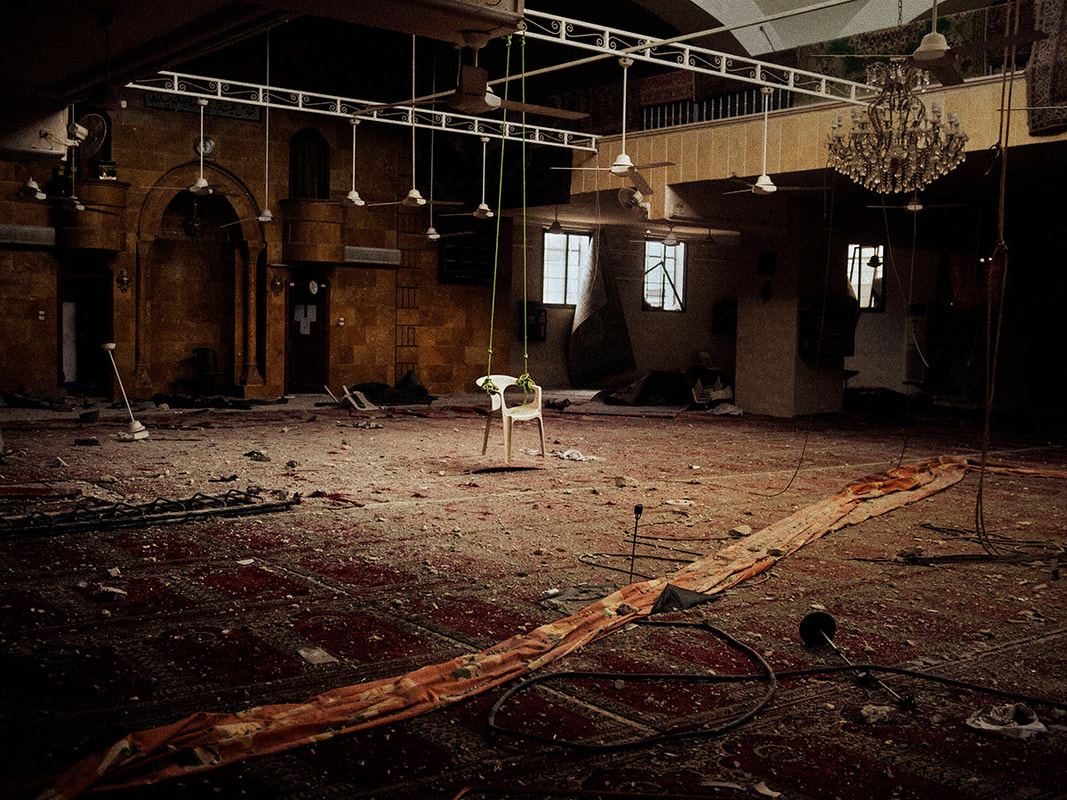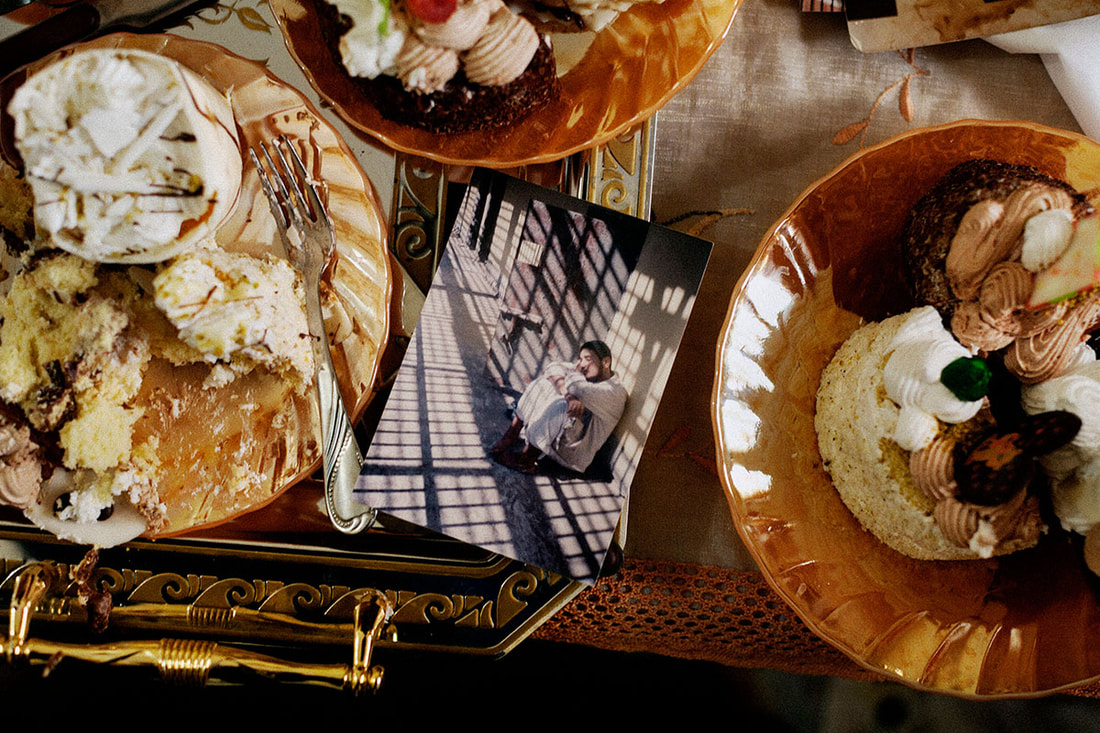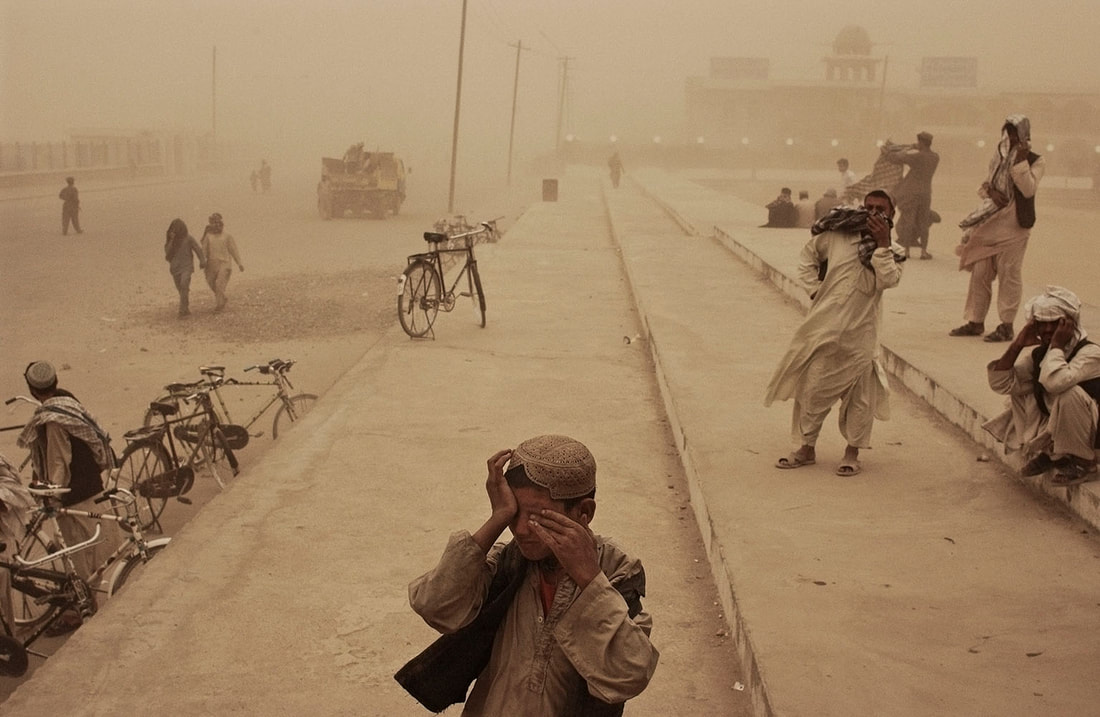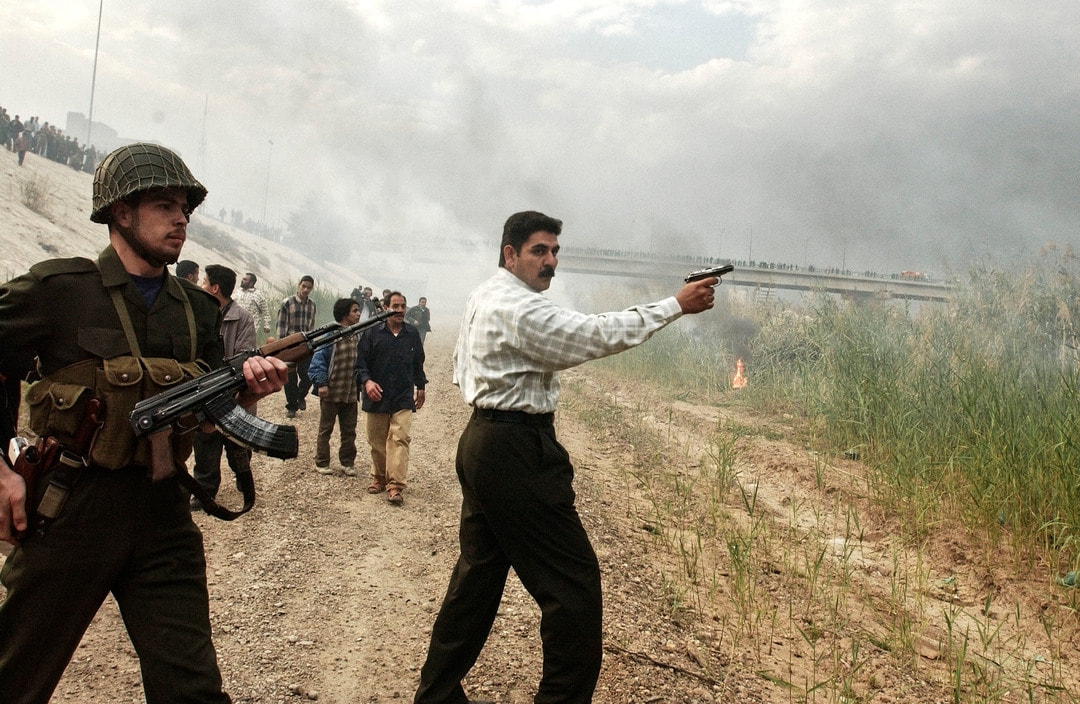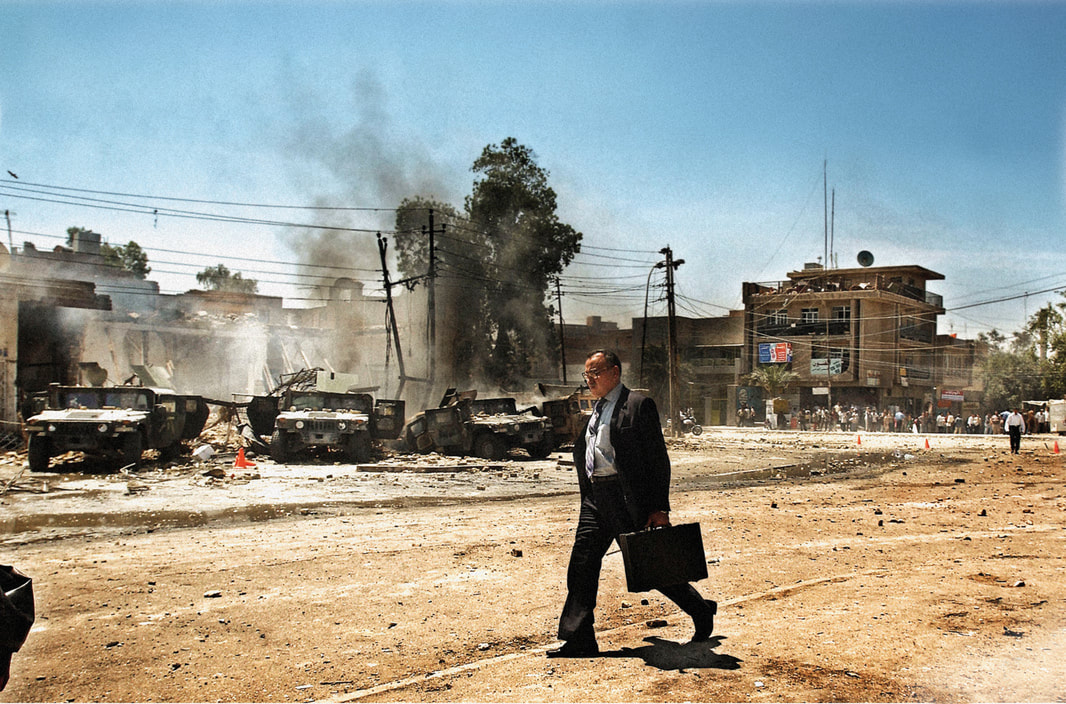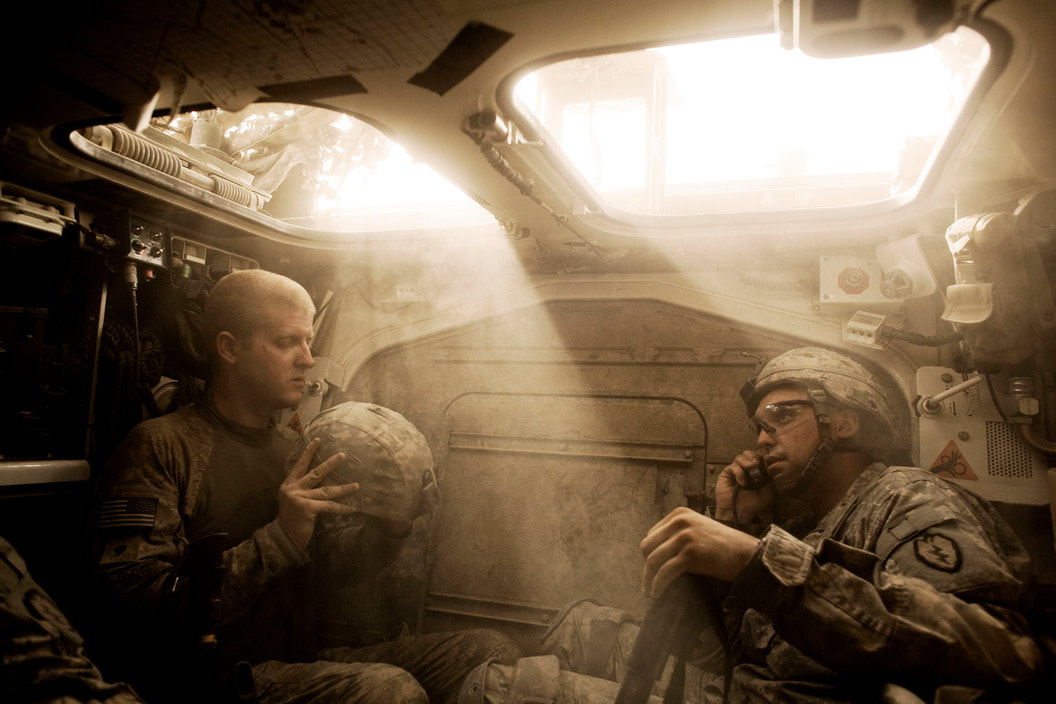|
|
About the PhotographerMagnum photographer Moises Saman blends traditional conflict photography with a deeply personal point of view. For more than ten years, he has been concerned with the humanitarian impact of war in the Middle East, documenting both the front line of daily suffering and the ‘fleeting moments on the periphery of the more dramatic events.’ Saman was born in Lima, Peru, from a mixed Spanish and Peruvian family. At the age of one, his family relocated to Barcelona, Spain, where Moises spent most of his youth. Saman studied Communications and Sociology in the United States at California State University, graduating in 1998. Over the years Saman’s work has received awards from the World Press Photo, Pictures of the Year and the Overseas Press Club and his photographs have been shown in a several exhibitions worldwide. In 2015, he was given the highly regarded Guggenheim Fellowship for his photojournalism project on the Arab Spring. |
|
Truth in Photography: Can you complete the sentence, “Truth in photography is…”
Moises Saman: I think that it is important to make a clear distinction between “truth” and “fact,” and this distinction is perhaps especially important when working in the context of conflict, where the narrative will inevitably be politicized. I also have been thinking about the nature of my role as a photographer in these settings, and to what extent my inherent biases as an outsider affect my process, and ultimately the meaning of my work. I believe in basing my work in facts, and exploring the grey areas where victim and perpetrator usually blur. It is in these gray areas where over the years I have found most meaning and purpose to my work, rather than attempting to make phoney declarations of truth.
Because of that, if I had to complete the sentence: Truth in photography is misleading.
Particularly in this context of conflict photography or social documentation where there's violence and death and destruction, it's even more important to try to figure out what's what. These are difficult questions, and the more experience that you have or the more years that you spend doing this, the questions get bigger and bigger, as opposed to the opposite.
TiP: What shaped you as a photographer? How old were you when you started making photographs?
Saman: I became interested in photography through my studies in sociology. I was a sociology major in university. I had a professor that really had a big influence on me. He was a sociology professor at a community college that I went to, and he used a lot of documentary photography in his lectures on sociology. I was a recent immigrant to the United States, and the language of photography, maybe because English was a second language to me, opened up many more possibilities.
TiP: Where was that?
Saman: That was in Cerritos College in Southern California, just south of L.A. I must have been around 19, 20. Then I started working for very small newspapers, weekly papers in Southern California. I got a couple of internships, one in a newspaper in San Diego, another one in Santa Monica. My big break was, upon graduation, I was offered a summer internship at Newsday in New York. I moved to New York that summer, and I never came back. That was the beginning of my career. I was eventually hired as a staff photographer at Newsday, and I stayed with them over seven years on staff. And then I went freelance. I was hired right at the end of 2000. And, of course, 9/11 changed the course of my life, as it did of many other people, and that's what guided me on the track of covering conflict.
TiP: When did you become part of Magnum?
Saman: I joined Magnum in 2010, as a nominee. I had left Newsday already for about two and a half years by that point. I was looking to understand myself better as a photographer. What was the reason why I was doing what I was doing? I was looking for more depth and to take charge of my own decisions, as opposed to illustrating other people's stories for a newspaper, and to be able to focus more on a region. Right when I joined Magnum, I moved to Egypt, which began a four-year period of my life where I was very much involved in covering the Arab Spring.
Moises Saman: I think that it is important to make a clear distinction between “truth” and “fact,” and this distinction is perhaps especially important when working in the context of conflict, where the narrative will inevitably be politicized. I also have been thinking about the nature of my role as a photographer in these settings, and to what extent my inherent biases as an outsider affect my process, and ultimately the meaning of my work. I believe in basing my work in facts, and exploring the grey areas where victim and perpetrator usually blur. It is in these gray areas where over the years I have found most meaning and purpose to my work, rather than attempting to make phoney declarations of truth.
Because of that, if I had to complete the sentence: Truth in photography is misleading.
Particularly in this context of conflict photography or social documentation where there's violence and death and destruction, it's even more important to try to figure out what's what. These are difficult questions, and the more experience that you have or the more years that you spend doing this, the questions get bigger and bigger, as opposed to the opposite.
TiP: What shaped you as a photographer? How old were you when you started making photographs?
Saman: I became interested in photography through my studies in sociology. I was a sociology major in university. I had a professor that really had a big influence on me. He was a sociology professor at a community college that I went to, and he used a lot of documentary photography in his lectures on sociology. I was a recent immigrant to the United States, and the language of photography, maybe because English was a second language to me, opened up many more possibilities.
TiP: Where was that?
Saman: That was in Cerritos College in Southern California, just south of L.A. I must have been around 19, 20. Then I started working for very small newspapers, weekly papers in Southern California. I got a couple of internships, one in a newspaper in San Diego, another one in Santa Monica. My big break was, upon graduation, I was offered a summer internship at Newsday in New York. I moved to New York that summer, and I never came back. That was the beginning of my career. I was eventually hired as a staff photographer at Newsday, and I stayed with them over seven years on staff. And then I went freelance. I was hired right at the end of 2000. And, of course, 9/11 changed the course of my life, as it did of many other people, and that's what guided me on the track of covering conflict.
TiP: When did you become part of Magnum?
Saman: I joined Magnum in 2010, as a nominee. I had left Newsday already for about two and a half years by that point. I was looking to understand myself better as a photographer. What was the reason why I was doing what I was doing? I was looking for more depth and to take charge of my own decisions, as opposed to illustrating other people's stories for a newspaper, and to be able to focus more on a region. Right when I joined Magnum, I moved to Egypt, which began a four-year period of my life where I was very much involved in covering the Arab Spring.
TiP: It’s interesting to me that you don't really see yourself as a conflict photographer, yet everyone on the internet calls you a conflict photographer. Could you talk a little bit about that?
Saman: I continue to work, and I have worked for many years, in the context of conflict or post-conflict. But to me, there's a certain connotation to that definition that boxes you in in a way. I understand that there's a need to define people's works and then to box them into certain categories. Maybe I relate more to the definition of a documentary photographer, perhaps is a little bit more of a wider scope. For me, the term “war photographer” or “conflict photographer,” I find that a little bit narrow and perhaps a little bit deceiving as well in terms of what we're expected to photograph. I'm not a frontline-type photographer as some of my colleagues are, and what interests me about conflict, and the subjects that I find interesting in conflict, are not necessarily the ones doing the fighting.
TiP: A point that really resonated for me was that you were interested in those gray areas, the blurry areas between perpetrator and victim. I think your photographs delve deep into the humanity, of who both of those people can be, and to see if there is humanity there. I'm sure you photographed people who do terrible things to other people. And then you see people who have been victimized, and you just wish you could do something.
Saman: Absolutely, in retrospect. This sort of understanding or realization, it didn't become apparent right away. I remember my early years of covering conflict, I didn't necessarily understand these dynamics. As time went on, and as I covered conflicts that were protracted, I had a chance to return to different periods and to understand a little bit better about how these roles change over time and how a victim can very well be a perpetrator later on and vice versa. That seems to be something that I keep seeing repeated over and over in different conflicts, and to me that speaks about something that transcends just a particular conflict, but it's maybe inherent in conflict itself. I became fascinated by this ambiguity and at the same time, this ambiguity came with dilemmas, because as a journalist, which I consider myself also a journalist, I don't think it's good enough to just offer more ambiguity. Facts need to amount to something, and the problem is that what they amount to is unclear and it's not stable, and that's the dilemma. I'm fascinated by these gray areas.
Saman: I continue to work, and I have worked for many years, in the context of conflict or post-conflict. But to me, there's a certain connotation to that definition that boxes you in in a way. I understand that there's a need to define people's works and then to box them into certain categories. Maybe I relate more to the definition of a documentary photographer, perhaps is a little bit more of a wider scope. For me, the term “war photographer” or “conflict photographer,” I find that a little bit narrow and perhaps a little bit deceiving as well in terms of what we're expected to photograph. I'm not a frontline-type photographer as some of my colleagues are, and what interests me about conflict, and the subjects that I find interesting in conflict, are not necessarily the ones doing the fighting.
TiP: A point that really resonated for me was that you were interested in those gray areas, the blurry areas between perpetrator and victim. I think your photographs delve deep into the humanity, of who both of those people can be, and to see if there is humanity there. I'm sure you photographed people who do terrible things to other people. And then you see people who have been victimized, and you just wish you could do something.
Saman: Absolutely, in retrospect. This sort of understanding or realization, it didn't become apparent right away. I remember my early years of covering conflict, I didn't necessarily understand these dynamics. As time went on, and as I covered conflicts that were protracted, I had a chance to return to different periods and to understand a little bit better about how these roles change over time and how a victim can very well be a perpetrator later on and vice versa. That seems to be something that I keep seeing repeated over and over in different conflicts, and to me that speaks about something that transcends just a particular conflict, but it's maybe inherent in conflict itself. I became fascinated by this ambiguity and at the same time, this ambiguity came with dilemmas, because as a journalist, which I consider myself also a journalist, I don't think it's good enough to just offer more ambiguity. Facts need to amount to something, and the problem is that what they amount to is unclear and it's not stable, and that's the dilemma. I'm fascinated by these gray areas.
TiP: What are some of the bigger questions for you?
Saman: Is there humanity in war? Is there a necessary war? Is there a morality to certain conflicts or to achieve certain changes in society, and is violence warranted sometimes or not? These are very difficult questions that I struggle with because I think that there has been plenty of positive change in the world that has come through violent uprisings. As much as I hate violence and I hope that my work speaks about how awful and horrible and how much suffering there is in war, I also have to deal with these questions. Is it morally warranted or not? So that's one question right there. But then there's also questions about representation, there are questions about my own role. When I have this privilege of having access to mass audience via the publications that I contribute to, there's a responsibility there that I want to be very much in touch with, and I don't want to take it for granted. I try to stay grounded and understand what my limitations are as well, because of my background, because of my understanding of this story, because of my many different factors. Again, these are questions that develop over time.
TiP: Talk more about refugee camps.
Saman: Not having had those experiences oneself, it's hard to relate, and it's hard to see things from a non-judgmental position or point of view. Displacement is a topic that I've worked on, and I continue to work on through my career and it's just so difficult to understand the motivations or the reasons people have to leave their homes with just a bag sometimes. I became a father two years ago for the first time. And that also sort of changes…
TiP: Parenting definitely changes your perspective.
Saman: So that was a big one for me. You suddenly become softer. But I think in a way that opens up another perception, and it's been really interesting for me to return to some of these places, now as a father. My reaction to things has changed. My ability to work also has changed, or my focus. So it's part of being a human being, and in your life, circumstances change. There's so many factors that affect who you are as a photographer.
Saman: Is there humanity in war? Is there a necessary war? Is there a morality to certain conflicts or to achieve certain changes in society, and is violence warranted sometimes or not? These are very difficult questions that I struggle with because I think that there has been plenty of positive change in the world that has come through violent uprisings. As much as I hate violence and I hope that my work speaks about how awful and horrible and how much suffering there is in war, I also have to deal with these questions. Is it morally warranted or not? So that's one question right there. But then there's also questions about representation, there are questions about my own role. When I have this privilege of having access to mass audience via the publications that I contribute to, there's a responsibility there that I want to be very much in touch with, and I don't want to take it for granted. I try to stay grounded and understand what my limitations are as well, because of my background, because of my understanding of this story, because of my many different factors. Again, these are questions that develop over time.
TiP: Talk more about refugee camps.
Saman: Not having had those experiences oneself, it's hard to relate, and it's hard to see things from a non-judgmental position or point of view. Displacement is a topic that I've worked on, and I continue to work on through my career and it's just so difficult to understand the motivations or the reasons people have to leave their homes with just a bag sometimes. I became a father two years ago for the first time. And that also sort of changes…
TiP: Parenting definitely changes your perspective.
Saman: So that was a big one for me. You suddenly become softer. But I think in a way that opens up another perception, and it's been really interesting for me to return to some of these places, now as a father. My reaction to things has changed. My ability to work also has changed, or my focus. So it's part of being a human being, and in your life, circumstances change. There's so many factors that affect who you are as a photographer.
TiP: It's easy to dismiss the idea of truth in photography, but if you're photographing people who are faced many times a day with life and death situations, these people you're photographing are constantly seeking truth. You're aware of that when people are in pain or suffering, or even the predators, they're all seeking the truth as it relates to their own lives, to the causes, the political and social situation. But then it's the truth of what does it take to survive? It's on the line every second of the day, so when you go into that world as a photographer, I think the biggest challenge would be, how do you convey the truth that someone else is seeking? How do you show their humanity?
Saman: Absolutely. It's a huge challenge that doesn't get any easier. There's a certain heroism in this daily confrontation with this truth that you're talking about, and to me, as far as I can get away from victimization and more trying to show this heroism, this resilience, this humanity, this life and death of events that happen to these people on a daily basis, in how they manage. These are heroic things that some of these people have to do to get through each day to take care of their families. To me, this dignity, and this resilience, and this power in the face of adversity is such a motivating factor, to be able to capture that. That is what really moves me and what really makes me get up in the morning and want to continue doing what I do. There’s so much victimization as well, and so much reduction of people’s existence, that maybe this other part, this heroism gets a little bit buried sometimes. It's just really incredible to witness how some of these people get up every morning to face another day of uncertainty, another day of potential harm to them, to their families. It's so inspiring, and at the same time, horrible as well. I don't want to also overdramatize it, or romanticize it to a level where it becomes, sort of an idea. It is these little things of everyday life in these places that I seek to elevate, and I seek to focus on, and hopefully with it comes the humanity part and all of the other questions
TiP: Could you talk about some specific situations, specific images that continue to resonate for you?
Saman: I've taken some difficult pictures of children, that have been either maimed or wounded. That to me, perhaps I still think about sometimes. This is something that became more so after I became a father. I remember there's that child that I photographed in Iraq that was missing both arms, and he was living in sort of a makeshift camp in a destroyed apartment building complex. That's one kid that I think about often, and there's several cases like that.
Saman: Absolutely. It's a huge challenge that doesn't get any easier. There's a certain heroism in this daily confrontation with this truth that you're talking about, and to me, as far as I can get away from victimization and more trying to show this heroism, this resilience, this humanity, this life and death of events that happen to these people on a daily basis, in how they manage. These are heroic things that some of these people have to do to get through each day to take care of their families. To me, this dignity, and this resilience, and this power in the face of adversity is such a motivating factor, to be able to capture that. That is what really moves me and what really makes me get up in the morning and want to continue doing what I do. There’s so much victimization as well, and so much reduction of people’s existence, that maybe this other part, this heroism gets a little bit buried sometimes. It's just really incredible to witness how some of these people get up every morning to face another day of uncertainty, another day of potential harm to them, to their families. It's so inspiring, and at the same time, horrible as well. I don't want to also overdramatize it, or romanticize it to a level where it becomes, sort of an idea. It is these little things of everyday life in these places that I seek to elevate, and I seek to focus on, and hopefully with it comes the humanity part and all of the other questions
TiP: Could you talk about some specific situations, specific images that continue to resonate for you?
Saman: I've taken some difficult pictures of children, that have been either maimed or wounded. That to me, perhaps I still think about sometimes. This is something that became more so after I became a father. I remember there's that child that I photographed in Iraq that was missing both arms, and he was living in sort of a makeshift camp in a destroyed apartment building complex. That's one kid that I think about often, and there's several cases like that.
TiP: What is your process for making photographs when you go into one of these situations? For example, you live in Amman, Jordan, do you make photographs on the street? Do you do photographs of that sort? Are you making pictures all the time?
Saman: Not all the time, no. I found that for me it was important to keep some boundaries between my identity as a photographer and my family or other interests that I have. So, I am not the kind of photographer that is making work all the time. But I've done work in Jordan. I am involved in a couple of projects here. They have to do with refugees, because Jordan, as you may know, is one of the biggest host countries for refugees. So I've been following the lives of some of these people here for the past two years. And my process, it depends, you know? It's a combination of observing and trying not to disturb the scene. But at the same time, more and more I find it’s the opposite. I tend to be more attracted to making work that is a dialogue between me and my subject. I tend to have more interaction with my subject beyond the actual taking of the photograph, and to seek these moments where there's a clear understanding of our roles as opposed to this street photographer approach where you're just taking photographs without people noticing.
TiP: You want to be able to give a balanced view, because photographs can create cultural stereotypes. Or they can be used for political means or to political advantage.
Saman: It's really true. And it's something that I've been thinking about a lot as well in post-conflict situations. For example, how do the narratives get formed? The memory of what happened, how does that get shaped? A lot of times it gets shaped through visual means, through photography. And so, the life span of an image that's been taken in this context is something that I'm interested in. I've seen it used in different ways by some of these actors that have the power to change the narrative, or to create a narrative, or to shape the memory of an event, and it’s a question that I've been thinking about a lot, because in the future, how will my work be interpreted? How will my work be consumed? What happens to these photographs? Will they be read or seen in the same light as I intended, or as I was hoping? That's something that perhaps there is something that can be done now to lay the groundwork for the future.
Saman: Not all the time, no. I found that for me it was important to keep some boundaries between my identity as a photographer and my family or other interests that I have. So, I am not the kind of photographer that is making work all the time. But I've done work in Jordan. I am involved in a couple of projects here. They have to do with refugees, because Jordan, as you may know, is one of the biggest host countries for refugees. So I've been following the lives of some of these people here for the past two years. And my process, it depends, you know? It's a combination of observing and trying not to disturb the scene. But at the same time, more and more I find it’s the opposite. I tend to be more attracted to making work that is a dialogue between me and my subject. I tend to have more interaction with my subject beyond the actual taking of the photograph, and to seek these moments where there's a clear understanding of our roles as opposed to this street photographer approach where you're just taking photographs without people noticing.
TiP: You want to be able to give a balanced view, because photographs can create cultural stereotypes. Or they can be used for political means or to political advantage.
Saman: It's really true. And it's something that I've been thinking about a lot as well in post-conflict situations. For example, how do the narratives get formed? The memory of what happened, how does that get shaped? A lot of times it gets shaped through visual means, through photography. And so, the life span of an image that's been taken in this context is something that I'm interested in. I've seen it used in different ways by some of these actors that have the power to change the narrative, or to create a narrative, or to shape the memory of an event, and it’s a question that I've been thinking about a lot, because in the future, how will my work be interpreted? How will my work be consumed? What happens to these photographs? Will they be read or seen in the same light as I intended, or as I was hoping? That's something that perhaps there is something that can be done now to lay the groundwork for the future.
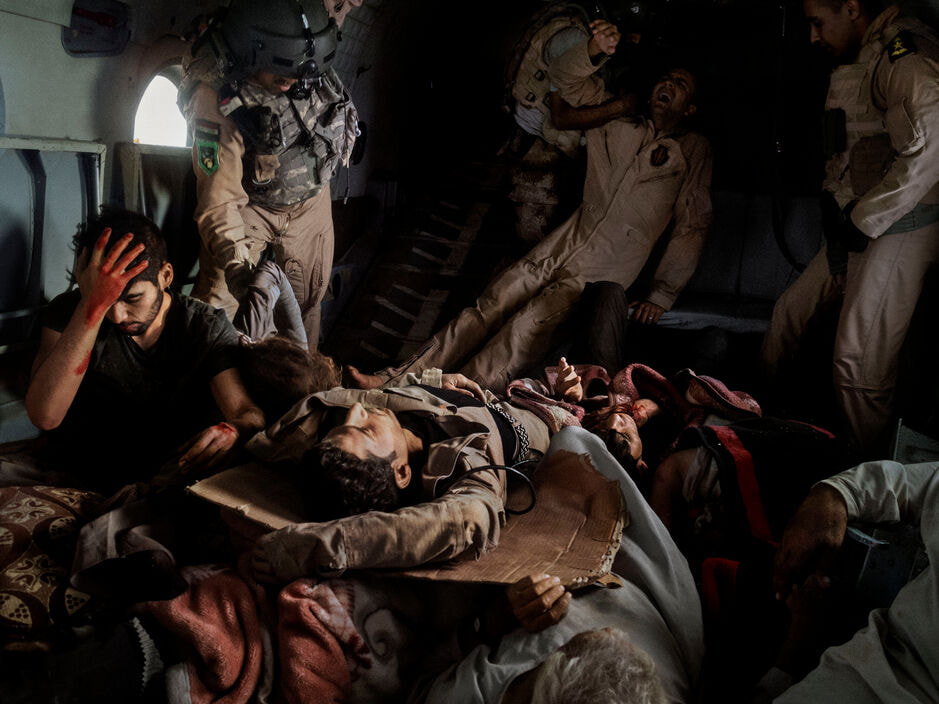
Injured survivors of an Iraqi Air Force helicopter crash in Mount Sinjar lie onboard a rescue helicopter on its way to Iraqi Kurdistan. The survivors included Yazidi civilians, Kurdish and Iraqi Army personnel, and journalists. The Yazidis were fleeing persecution at the hands of Islamist extremists who had recently taken over their hometowns in Iraq's Ninevah province. In the high grounds of Mount Sinjar, thousands of Yazidis found safety from ISIS, but also the risk of dying from hunger and thirst. The first rescue helicopter had been sent to save the besieged civilians from that dismal fate, but it crashed into the side of the mountain shortly after takeoff. Sinjar Mountains, Iraq, 2014. © Moises Saman / Magnum Photos
|
|
|

